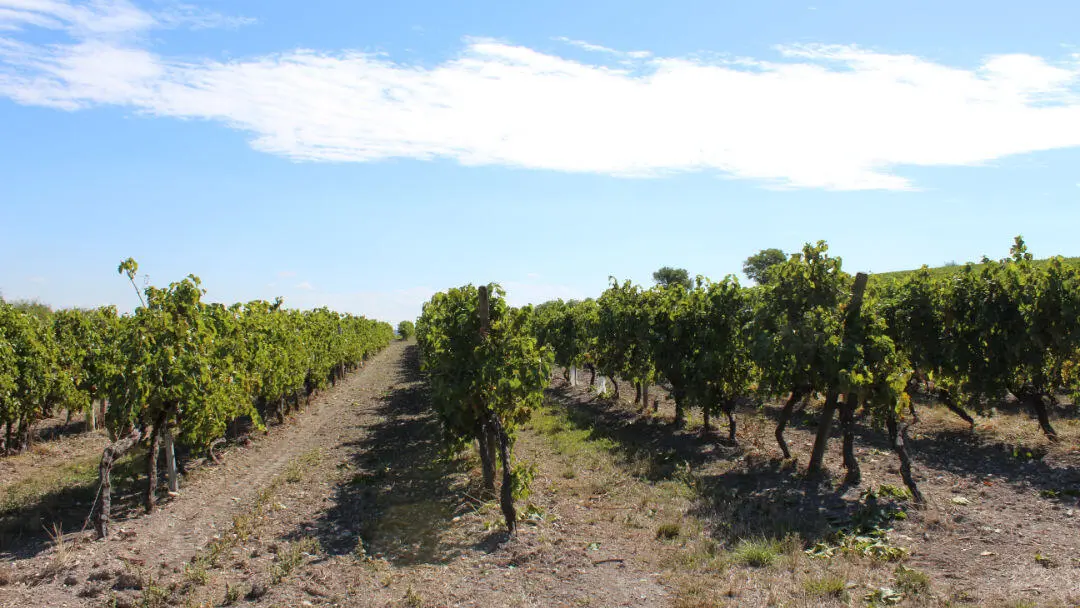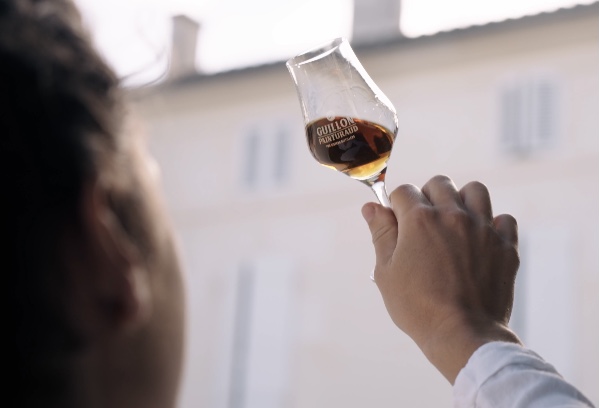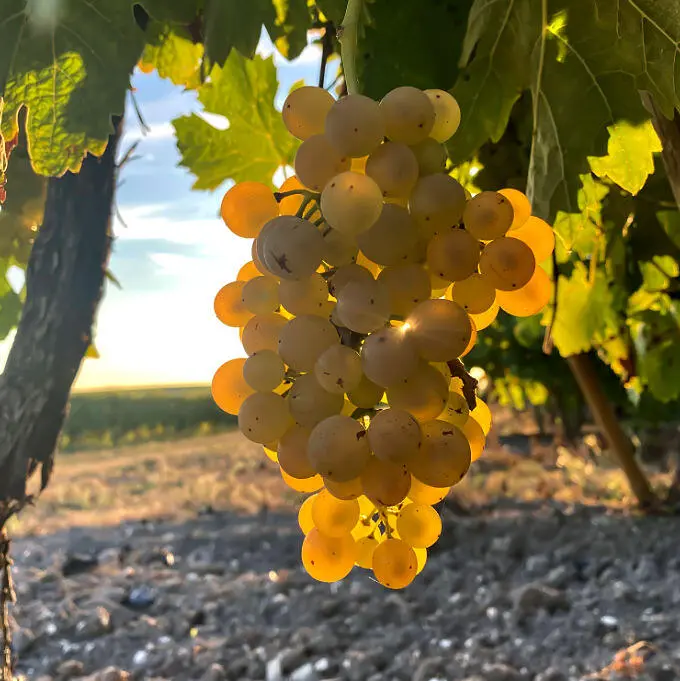The village of Segonzac is located on a limestone area, at the heart of the Grande Champagne, 1st cru of Cognac.
Its soils were defined in 1857 by Henri Coquand, based on the Charente Champagne.
Our estate is located on two different geological strata.
The limestone
- The Santonian extends from Cognac to the plain of Gensac la Pallue.
The Coteau de Biard, south of our village, is the southern limit of the plain of Cognac.
It is a stage of the upper cretaceous (- 100 to 66 million years), characteristic rock of the period.
The limestone (creta) gives it its name. The limestone is soft and porous.
- The Campanian, a more chalky limestone, gives birth to the landscapes of the Grande Champagne and its landscapes of vineyard hillsides.
The limestone is whiter.
The advantages for the vine
White sedimentary limestone, formed during the Cretaceous period, develops different layers (or strata).
The limestone offers many advantages for the vine.
It offers a drainage distributing the water necessary to the plant (without excess, in case of pouring rain, thanks to its porosity and regular in case of dry weather).
The limestone also allows to spread the soil temperature at the root level, influencing the ripeness of the grapes.
Soil and subsoil of Grande Champagne
The subsoil is the unaltered mother rock.
It covers a relatively large area.
The soil covers the subsoil, it varies according to the plot of land.
It is invested by the root system of the vine.
Its characteristics evolve (mineral and organic components).
The clay-limestone texture of the soil, its more or less compact structure or its porosity are essential elements to know the evolution of the ripeness of each of our parcels.
All of these elements will influence the character of our wines, then of our eaux-de-vie (rooting, access to water or nutrient reserves, ripeness and yield characteristics...).
The soil of Grande Champagne is dark grey or black, mixed with fragments of friable limestone. It is not very deep.
Its subsoil is varied of friable rocks or chalky plates.
Why do we say Grande Champagne, 1st cru of Cognac ?
In these lands of Champagne, our eaux-de-vie will get their aroma and their length in mouth.
The geology of Grande Champagne is very specific and unique to the region. Find out why we call it the first cru of Cognac here.






